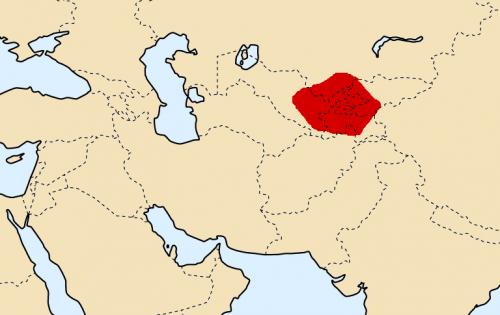A ja znalazłem coś takiego:
"The Chinese have an account by Ban Gu of about "a hundred men" under the command of Zhizhi who fought in a so-called "fish-scale formation" to defend Zhizhi's wooden-palisade fortress against Han forces, in the Battle of Zhizhi in 36 BCE. The historian Homer Dubs claimed that this might have been the Roman testudo formation and that these men, who were captured by the Chinese, were able to found the village of Liqian (Li-chien) in Yongchang County.[3] There is, however, no evidence that these men were Romans,[4] and recent DNA testing of the male inhabitants of Liqian does not support the hypothesis."
(szybkie tłumaczenie, bo mnie o nie proszono, jednak nie jestem w tym zbyt dobry więc za błędy/nietrafione słownictwo przepraszam)
Chińczycy posiadają relację Ban Gu o około "setce mężczyzn" pod dowódzctwem Zhizhi, którzy walczyli w tzw formacji "rybiej łuski" aby obronić drewnianą palisadę fortecy Zhizhi przed wojskami Han podczas bitwi o Zhizhi w roku 36 p.n.e. Historyk Homer Dubs twierdzi, że to mogła być rzymska formacja "testudo" [żółw] i że ci mężczyźni, którzy zostali schwytani przez Chińczyków, mogli założyć wioskę Liqian w hrabstwie (?) Yongchang. Jednak nie ma dowodu, że ci mężczyźni byli Rzymianinami a i ostatnie testy DNA przeprowadzone na męskiej części mieszkańców Liquian nie popierają tej hipotezy.
<a href="http://en.wikipedia.org/wiki/Sino-Roman_relations" target="_blank">http://en.wikipedia.org/wiki/Sino-Roman_relations</a>
Principal component (PC) and multidimensional scaling (MDS) analysis suggests that the Liqians are closely related to Chinese populations, especially Han Chinese populations, whereas they greatly deviate from Central Asian and Western Eurasian populations.
(Jakieś badania DNA - PC i MDS) sugerują, że mieszkańcy Liqian są blisko spokrewnieni z chińczykami, szczególnie Chińczykami Han (?) podczas gdy (ich geny) znacznie różnią się od środkowoazjatyckich i zachodnio euroazjatyckich.
<a href="http://www.ncbi.nlm.nih.gov/pubmed/17579807" target="_blank">http://www.ncbi.nlm.nih.gov/pubmed/17579807</a>












